Click on our logo above to view how you can increase visits
to your website using one of our advertising options.
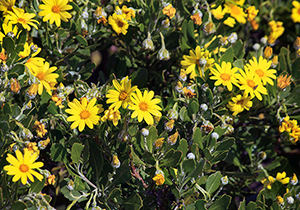 |
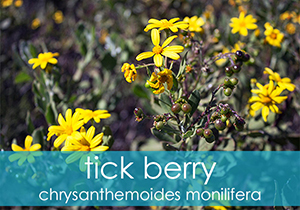 |
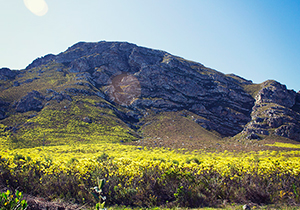 |
The bright yellow Crysanthemoides monilifera, which means “yellow flower bearing a necklace” (thanks to the green-red berries that grows below the blooms) is a beautifully bright shrub that can grow up to 2m in height and blooms all year round, with the most blooms being seen around Autumn. Due to the edible little fruits that it produces this flower is easily spread through bird and animal droppings, helping to coat most of the mountain side in these daisy-like flowers.
Although pretty to us, this plant is seen as a nuisance in other countries due to its fast growing nature. All we know is that it adds much needed colour in the winter months and a great addition to your home garden!
Information has been adapted from PlantzAfrica.com
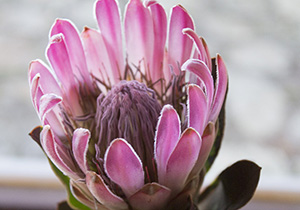 |
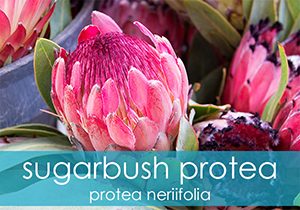 |
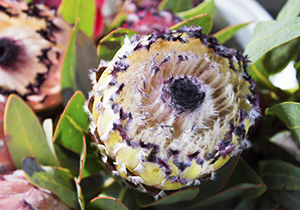 |
The Protea Nerifolia (also known as the Sugarbush Protea) has a distinct growth pattern, with a 3 meter high “trunk” from which the flower blooms. The lower bracts are papery and eventually curve backwards like wood shavings as they go higher up. The blooms themselves vary in colour from pure white to light pink to deep red, with a distinct white or black fringe (which resembles fur) along the tips of the petals. These colourful petals work as a shield, protecting the inner flowers from the harsh environment.
These flowers are a beautiful addition to any garden and play a large role in the creation of bouquets and arrangements due to their diverse colours and interesting fur-lined petals.
Adapted from: Bean, A & Johns, A (2005). Stellenbosch to Hermanus: South African Wild Flower Guide 5. Cape Town: Botanical Society of South Africa. 158 – 159.
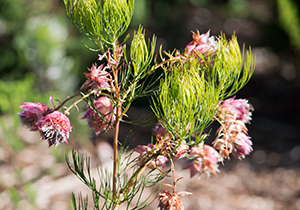 |
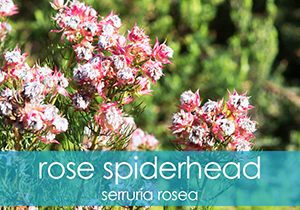 |
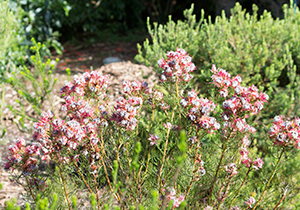 |
The Serruria “Sugar n Spice” flower is a hybrid of the Serruria Florida and Serruria Rosea.
Serruria Florida is known as the blushing bride and is a single stemmed, erect, evergreen shrub, 0.8-1.5 x 0.5 m. Flowering stems branch off the main stem producing fine, dissected leaves and end in terminal flowering buds. It produces 1-8 ivory to pink flowers per branch. It flowers from July to October and produces nut-like seeds which are released about two months later. This species is critically endangered due to too frequent fires and alien vegetation.
Serruria Rosea is one of the showiest spiderheads, producing a spectacular display of up to 20 rose-pink tightly clustered flower heads per stem. Plants growing at Kirstenbosch are producing upwards of 15 flowering stems and this little plant becomes a rounded flowering ball in late winter.
These two flower types together have created this beautiful hybrid, which can be found within the Fernkloof Nature Reserve.
Mathews, D. 1987. Serruria Forida-Cultivation and Planting Journal of the International Protea Association 13: 42. Australia.
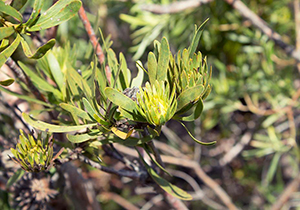 |
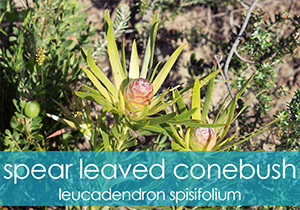 |
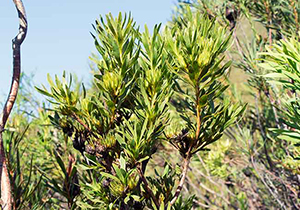 |
Also known as the common spear-leaved conebush, the Leucadendron Spissifolium flower is a resprouter that can grow up to 1.3m tall, with many hairless stems. The hairless, red-tipped leaves are slightly smaller on the male plants and are all slightly twisted along the axis. The conebush grows on damp sandy slopes from sea level to 1500m above, usually scattered over a large area (due to it being a resprouter). The species has the most extensive distribution in the genus, from the Gifberg to Cape Peninsula, Kogelberg, Elim and the Langeberg.
The male and female plants are also discernable by their difference in colour; with the females having a halo of ivory-coloured pointed involucral leaves.
Adapted from: Bean, A & Johns, A (2005). Stellenbosch to Hermanus: South African Wild Flower Guide 5. Cape Town: Botanical Society of South Africa. 164 - 165.
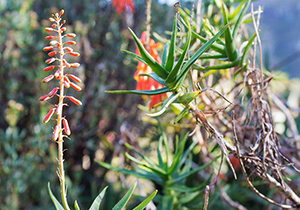 |
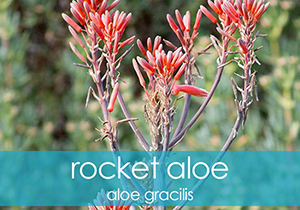 |
 |
Aloe gracilis is closely related to Aloe striatula, Aloe gracilis has large red flowers, leaf sheaths not as clearly marked as in Aloe striatula. Aloe gracilis can also be easily confused with Aloe ciliaris but one can distinguish the two apart by the fine marginal hair-like fringe that is present on the clasping parts of the leaves on Aloe ciliaris. The specie name 'gracilis' means 'thin and slender' and it refers to the stems.
The stems have numerous shrubby semi-erect stems that branch near the ground and can grow up to 2m in height. The leaves are a dull green colour, narrow and erectly spreading, leaf surfaces are smooth with numerous tiny white teeth that are 1mm in height. The flowers/inflorescences are single to twice branched, up to 3m high, raceme is found on the upper third of inflorescence.
These colourful aloes are easily maintained and require very little maintenance – perfect for a splash of colour or a way to attract some endemic birdlife.
Aloe Gracilis. (2004). Retrieved from http://www.succulents.co.za/aloes/rambling-aloes/aloe-gracilis.php